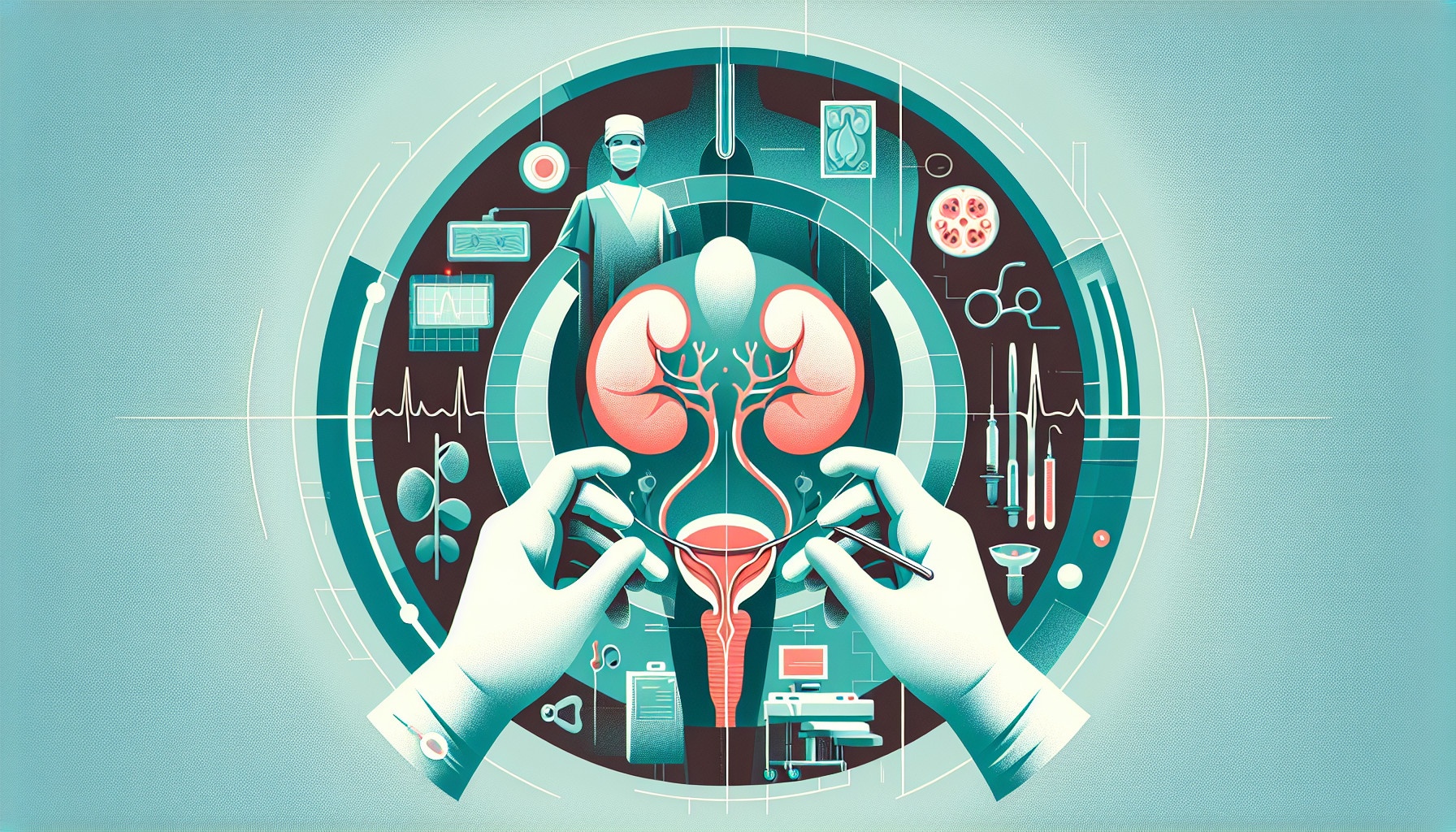Our Summary
This paper is about the surgical procedure called enterocystoplasty, which is used to treat bladder dysfunction. Although it’s an old technique, it’s still relevant and used today, especially in children and in severe cases of overactive bladder (OAB). The use of this operation has gone down since new treatments for OAB have been developed. However, doctors who treat adults should still be familiar with it, because they might need to use it for their patients who were treated as children and are now becoming adults. There are also less invasive ways to do this operation, but more research is needed to see how successful these are. The authors suggest that more studies should be done on the outcomes of this procedure for patients with OAB, and that there should be standardized recommendations for patients with neurogenic bladder (a condition where the nerves that send messages to the bladder are damaged). This will help doctors provide better care in the future.
FAQs
- What is the purpose of enterocystoplasty?
- How has the usage of enterocystoplasty changed with the advent of third line neuromodulation techniques?
- What needs to be further studied in order to standardize care for patients undergoing enterocystoplasty?
Doctor’s Tip
A helpful tip a doctor might tell a patient about bladder surgery, specifically enterocystoplasty, is to follow postoperative care instructions closely. This may include avoiding heavy lifting, staying hydrated, and taking prescribed medications as directed. It’s important to attend all follow-up appointments to ensure proper healing and address any concerns promptly. Additionally, maintaining a healthy lifestyle with regular exercise and a balanced diet can help support the success of the surgery.
Suitable For
Patients who are typically recommended bladder surgery include:
- Pediatric urology patients with bladder dysfunction
- Adults with refractory overactive bladder (OAB)
- Patients with neurogenic bladder dysfunction
- Patients who have failed conservative treatments or other surgical interventions
- Patients who require bladder augmentation or reconstruction due to bladder abnormalities or injuries
It is important for urologists to be familiar with enterocystoplasty and other bladder surgeries in order to provide appropriate care for these patients and improve their quality of life. Further research and standardization of recommendations for bladder surgery in different patient populations will help guide clinical practice in the future.
Timeline
Before bladder surgery:
- Patient experiences symptoms of bladder dysfunction, such as urinary incontinence, frequent urination, or difficulty emptying the bladder.
- Patient undergoes various diagnostic tests, such as urodynamic testing, cystoscopy, and imaging studies, to determine the underlying cause of their bladder dysfunction.
- Patient and healthcare provider discuss treatment options, including medications, behavioral therapies, and surgery.
- Patient decides to undergo bladder surgery, such as enterocystoplasty, to improve their bladder function.
After bladder surgery:
- Patient undergoes the surgical procedure, during which a section of the small intestine is used to enlarge the bladder and improve its capacity.
- Patient stays in the hospital for a period of time to recover from the surgery and monitor for any complications.
- Patient may experience temporary urinary retention, pain, and discomfort in the days following surgery.
- Patient is prescribed pain medication, antibiotics, and other medications to help with their recovery.
- Patient undergoes postoperative follow-up appointments to monitor their progress and address any concerns or complications.
- Patient may need to make lifestyle changes, such as modifying their diet or bladder habits, to optimize the results of the surgery.
- Patient may experience improvements in their bladder function, such as decreased urinary incontinence or increased bladder capacity, following the surgery.
- Patient continues to follow up with their healthcare provider regularly to monitor their bladder function and overall health.
What to Ask Your Doctor
- What is the purpose of enterocystoplasty and why is it being recommended for me?
- What are the potential risks and complications of the surgery?
- What is the expected recovery time and what can I expect during the recovery process?
- Will I need to make any lifestyle changes or modifications after the surgery?
- How long will the effects of the surgery last and will I need any follow-up procedures in the future?
- Are there any alternative treatments or procedures that I should consider before undergoing enterocystoplasty?
- What is the success rate of enterocystoplasty for my specific condition?
- Will I need to take any medications or undergo any additional therapies after the surgery?
- How experienced are you in performing enterocystoplasty and what is your success rate with this procedure?
- Can you provide me with any information or resources to help me better understand the surgery and its potential outcomes?
Reference
Authors: Budzyn J, Trinh H, Raffee S, Atiemo H. Journal: Curr Urol Rep. 2019 Jul 24;20(9):50. doi: 10.1007/s11934-019-0919-z. PMID: 31342172
